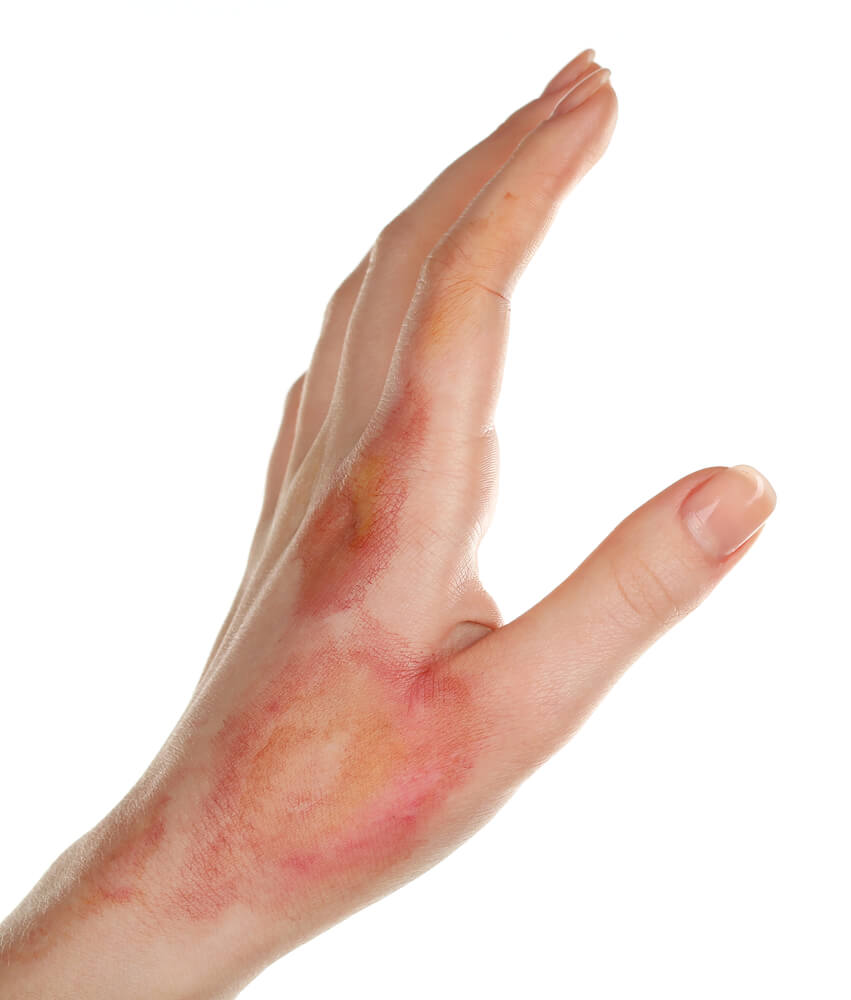Burns and Stem Cells
Burns and scalds are caused when the skin becomes damaged due to heat; a burn is caused by dry heat while a scald is caused by something wet. Burns and scalds are treated in the same way.
The skin is made up of three layers: the epidermis, the dermis, and the subcutis which is also called the subcutaneous fat. There are four types of burn which are determined by the layers of skin affected:
- superficial epidermal burn
- superficial dermal burn
- deep dermal or partial thickness burn
- full thickness burn[1]
The treatment received for burns varies depending upon the type of burn a patient has but serious burns can require extensive skin grafts and years of surgery. However, the vast majority of burns are preventable.
On average, accident and emergency units see 57,200 children under the age of 14 each year, which costs approximately £6.3 million.[2]
Burns Facts
- 3,750 under 15’s are admitted to hospital with burn or scald injuries in England and Wales each year [2]
- Hot drinks account for over 64% of hospital admissions for children with burns or scalds [2]
- Children under 2 years of age account for half of hospital admissions for burns and scalds while under 5’s account for three quarters [2]
- 8 babies and young children are admitted to hospital every day with a burn or scald injury [2]
- In the UK 250,000 people experience burns annually [3]
- Over 90% of burn injuries are preventable [3]
- There are currently 25 clinical trials investigating the application of stem cells in burns [4]
- There are currently 9 clinical trials investigating the application of cord blood in burns [5]
Burns and Stem Cells
A review of the use of stem cells in treating burns found that stem cells have been shown to promote better and faster healing of burn wounds in addition to reducing inflammation and reducing scarring. While the review found that most studies had been conducted using animals, more human studies are needed. Nonetheless, stem cells appear to have a lot of promise in the healing of burn wounds.[6]
While stem cells have been shown to improve wound healing and inflammation, their practical application has been hindered due to the fact that they require specialist storage and expert handling. However, a recent development has allowed researchers to encapsulate stem cells in an alginate gel derived from seaweed which has prolonged cell life for up to three days. The study found that after 3 days at temperatures between 4 and 21 degrees Celsius that up to 90% of stem cells were still viable, only 70% need to be viable to be accepted in medicine.
“With this new technology we are able to put stem cells directly onto an open wound with a stem cell bandage. The gel retains the cells so that they don’t leave the bandage – it’s the chemicals these cells make that actually do the healing. And we’re not talking about far into the future – we’re looking at this being something we can all be treated with in a few years.” said Che Connon, Professor of Tissue Engineering at Newcastle University.[7]
Burns and stem cells: headlines
References
- http://www.nhs.uk/Conditions/Burns-and-scalds/Pages/Introduction.aspx
- http://www.makingthelink.net/tools/costs-child-accidents/costs-burns
- http://79.170.40.160/britishburnassociation.org/wp-content/uploads/2017/07/NBCR2001.pdf
- https://clinicaltrials.gov/ct2/results?term=burns+stem+cells&Search=Search
- https://clinicaltrials.gov/ct2/results?term=burns+cord+blood&Search=Search
- http://www.hindawi.com/journals/bmri/2015/684084/
- http://www.ncl.ac.uk/press/news/2016/01/stemgell/
- BioMed research international, 2015, 684084. https://doi.org/10.1155/2015/684084
- Clinical and experimental dermatology, 37(5), 497–500. https://doi.org/10.1111/j.1365-2230.2011.04260.x
- Abo-Elkheir, W., Hamza, F., Elmofty, A. M., Emam, A., Abdl-Moktader, M., Elsherefy, S., & Gabr, H. (2017). Role of cord blood and bone marrow mesenchymal stem cells in recent deep burn: a case-control prospective study. American journal of stem cells, 6(3), 23–35.
The information contained in this article is for information purposes only and is not intended to replace the advice of a medical expert. If you have any concerns about your health we urge you to discuss them with your doctor.



